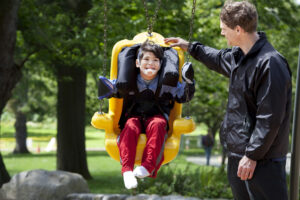Featured
Death is a universal fact, but it is one that feels incredibly far away and even impossible when you are a child. Teaching your children about death in a healthy and supportive environment can help them in the long run and can better prepare them for the ups and downs that life throws at them.
Whether it is their hamster dying, a grandparent or someone far more immediate, knowing how to guide your child through the grieving process and how to talk to them accurately about death as a whole will make a huge difference to their development and how they cope.
Teach your children about death

Prepare in Advance
An excellent way to teach your children about death is to introduce the concept before they experience their first big loss. You can watch movies or shoes that are geared toward kids and deal with the concept of loss as a great first introduction. You can alternatively focus on non-sentient creatures dying, like a houseplant, as an introduction. The permanence of death is the hardest part for kids to understand, so helping them grasp this concept early on can prepare them later in life.
When it Comes to Death, Speak Directly
Avoid using euphemisms about death, especially when it comes to younger children who will want to take your words literally. Saying that their grandparent is in a better place makes it sound like you could still visit. Being calm, direct, and, most of all, honest, is the best way to help your child understand quickly and avoid false hopes and confusion.
Don’t Send the Wrong Message
Young children will link death with actions if you say the wrong thing. If you say that their grandparent went to sleep and didn’t wake up, they will think that if they go to sleep, they won’t wake up, either. Similarly, if you don’t let them grieve or send the wrong message about the death, you could force your child into acting out. Be honest and avoid connecting the death with anything else. This is the easiest way for kids to accept it.

Be There For Them
Be there for them when they feel upset, when they don’t understand, and when they need a hug. Kids are going to be very upfront about how they feel, and letting it out is the best thing for them, so be their rock when they need it.
Remember Together
Remembering the loved one that has been lost is a great way to teach kids about death, grieving, and, most importantly, about moving on in a healthy way. You can hold a memorial for the family pet that died or take the entire family to the cemetery or other resting place of their lost family member. The more positive that you can be about it, the better. This works particularly well if you had your loved one cremated with www.commemorativecremation.com and then buried their ashes in a favourite spot or scattered their ashes, as this makes it a more positive destination than a cemetery.
Regardless of where your loved one is, going to their final resting place, remembering them, and focussing on the good times is a great way to show your kids how you can move on from the grief while still holding on to a loved one in their regular lives.























